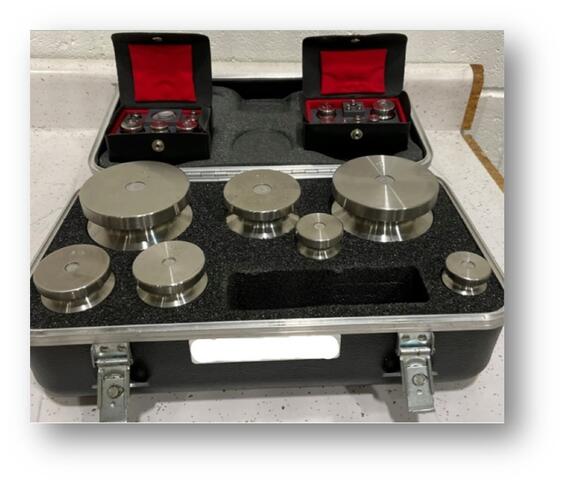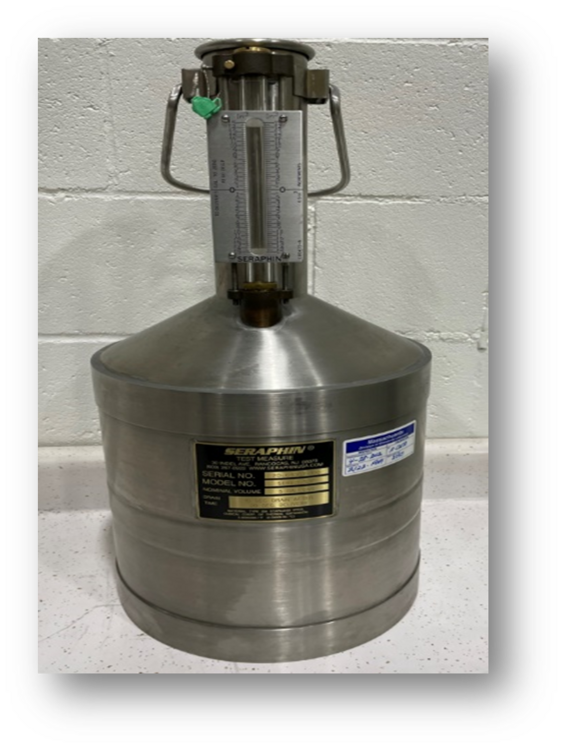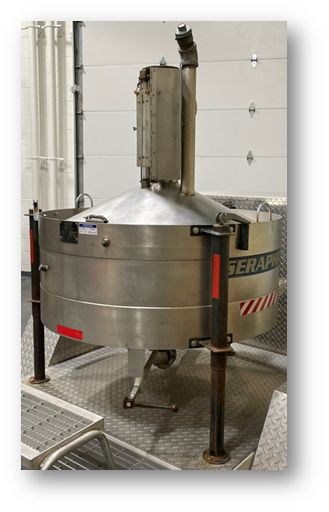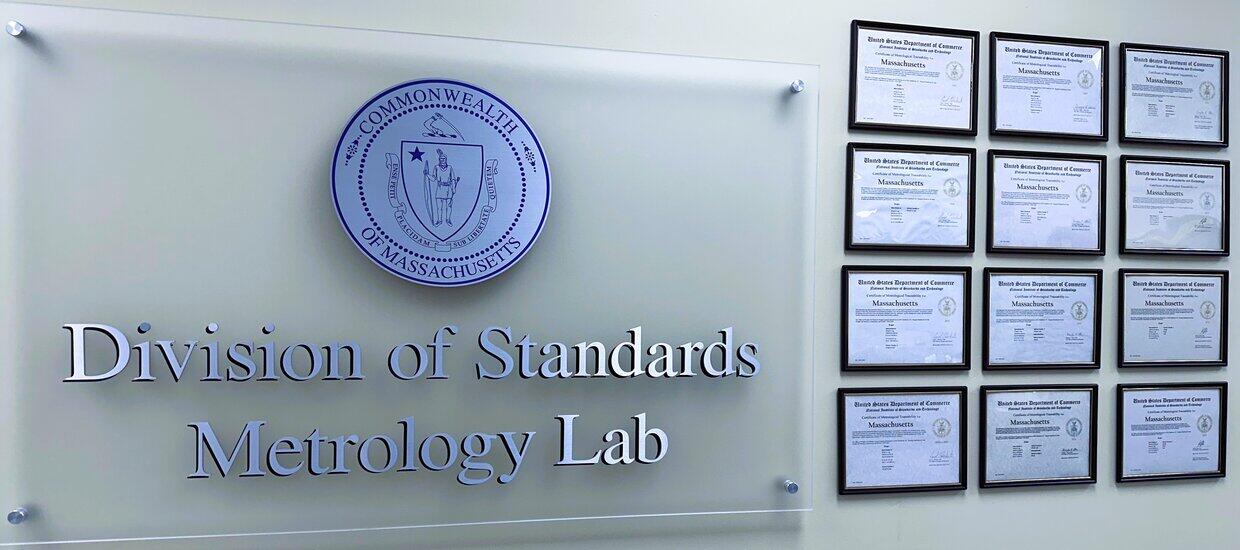Testing Your Stainless-Steel Weight Kits

- Please verify that you have not accidentally omitted any of the weights from the kit.
- If some of the smaller weights appear to be missing, be sure to first look under the foam insert or inside the folds of the smaller internal leatherette kits (if so equipped). If you find any, put them in their rightful place in the kit.
- If any of your kits have issues with improperly locking covers, clasps, hinges, or snaps, please use either rubber bands or Velcro straps to keep them closed so that they can be removed easily and secured after testing. Please refrain from using masking tape, scotch tape, or duct tape for this purpose.
- Please put some sort of identification on each kit as to the jurisdiction to which it belongs.
- If your kits have City / Town issued IDs or Serial Numbers, please be sure to identify this information somewhere on the kit or tag attached so that this information can be provided on your Calibration Certificate.
Testing Your Grip Handle Weights
- Please clean them off thoroughly & scrape or wire brush off any loose paint. Then give them a very light painting preferably using silver spray paint, or if using a brush, a coating as light as possible while still covering all areas of the weight. Please paint the bottom of the grip weight too. Grip weights that are submitted rusty, un-painted, and in poor condition will not be accepted!
- Please remember if you are submitting metric Grip Weights (weighing in Kilograms) the appropriate paint color for kg weights is Gold, not Silver, per NIST requirements.
- If possible, please stamp each individual grip weight with an identification number because the Calibration Certificate must show a correction for each weight. Please keep the IDs simple and stamp them just above the lead plug located on the side.
- If you have older grip weights with screw-type cavity openings, please be sure that the screw cavities are loosened and that no paint is in the threads prohibiting them from being fully opened or closed. Access to this opening is needed. If adjustment is required and they cannot be opened, they will be condemned!
Testing Your 5 Gallon Test Measures

- Please rinse profusely. You should verify that all gasoline and / or diesel fuel residue has been removed from your test measures. Please rinse them with a mixture of water and a little mild dishwashing liquid. Let them drain and air dry completely. Test measures that are submitted with gasoline or diesel still inside will not be accepted.
- While rinsing, please fill your test measures with water up to the zero mark on the sight-gauge and observe it for a few minutes to verify that there are no leaks around the sight glass or seams of the test measure. Do not submit the test measure if a leak is observed.
- Please put some form of identification on each test measure as to the jurisdiction to which it belongs.
- If you plan to bring your test measures in along with their storage cases, please put the same kind of identification on them as well.
Testing Your 100 Gallon Oil Prover

- If it can come to the laboratory, it should be tested in the laboratory. If it is not roadworthy and requires testing where it stands, the testing must be done under a cover, if possible, in case of inclement weather on the day of the testing.
- If tested where it stands, a water source, hose, and place to drain will be required.
- If tested where it stands, a forklift with driver will be needed for the entire duration of test.
- Please have a few 5-gallon buckets available to capture any fuel residue that may be in the prover or your drain hose(s) prior to the test performance.
- You should spray the nuts and bolts on the adjustment portion of the sight gauge with rust remover or thread penetrating liquid in case adjustment is required.
- Please clean off the prover’s exterior so no one gets filthy while testing.
- Please fill your prover with water up to the zero line and observe it for a little while to verify that no leaks are evident anywhere.
Testing Your Anti-Freeze
- Please submit a 4 oz sample of any new anti-freeze formulation to the Massachusetts DOS Metrology Laboratory for testing.
- Please write the applicant number on the sample.
- For more information please refer to the web page below:
Contact
Phone
State Metrologist & Laboratory Manager
Metrology Technician & Compliance Officer II
